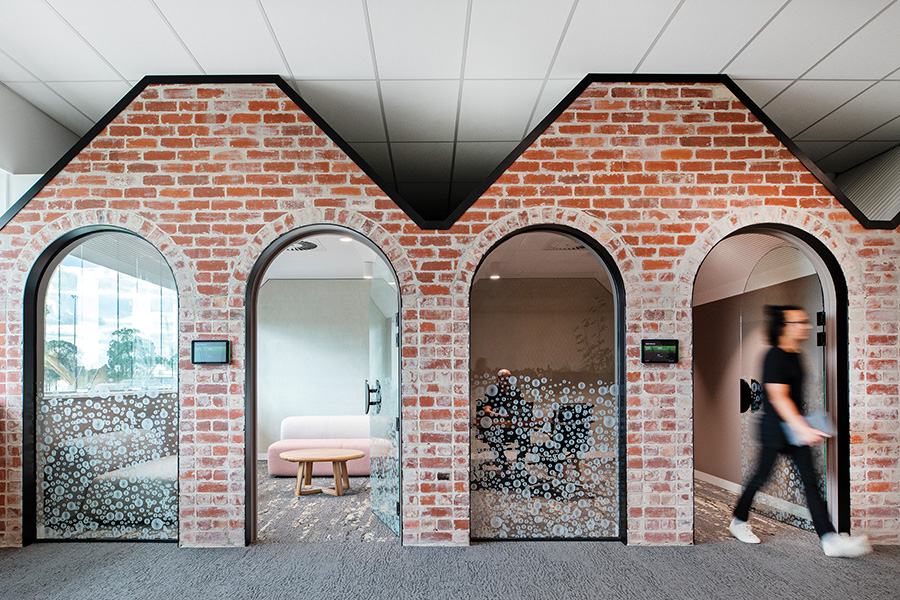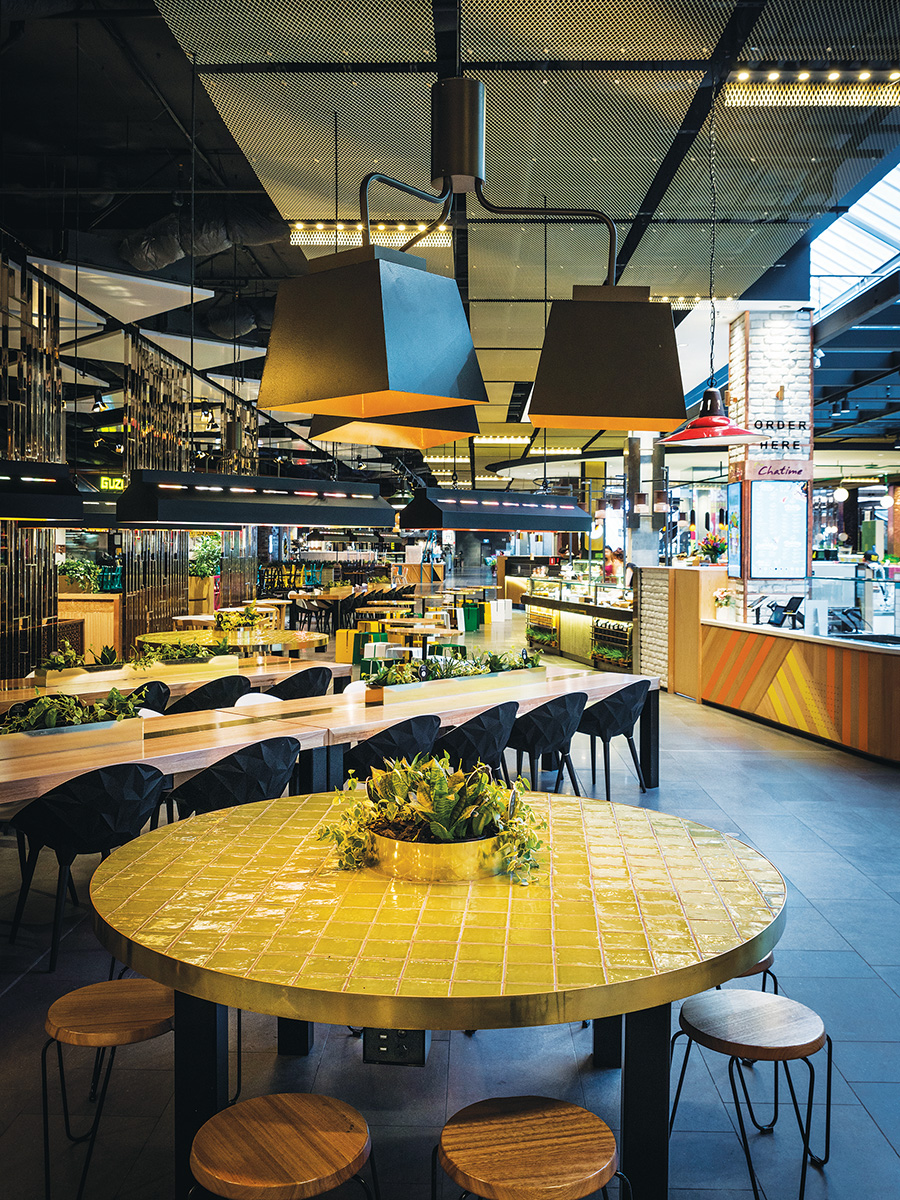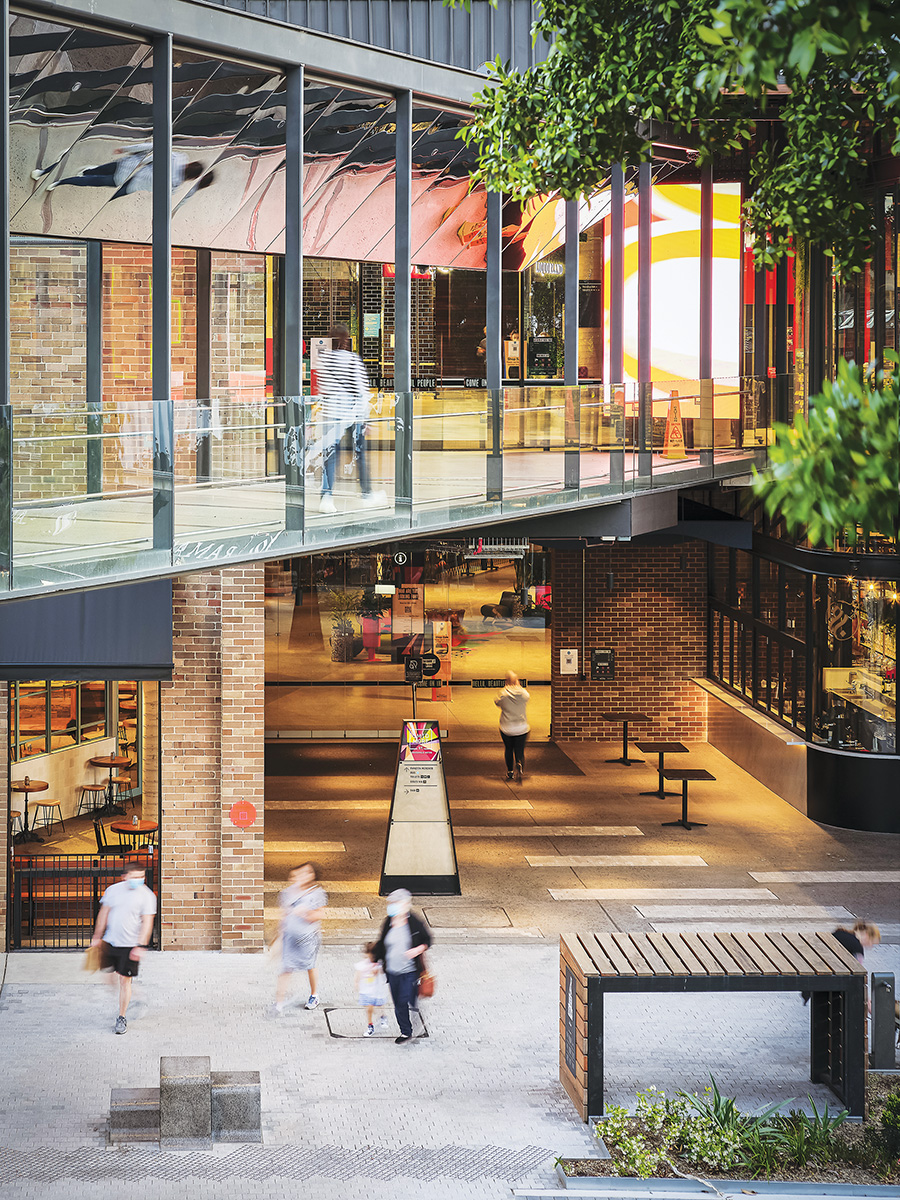This article authored by Harold Perks, Sonja Duric and Talia Uylaki of Hames Sharley was published in the latest issue of SCN magazine. Premium members can view the full digital magazine here
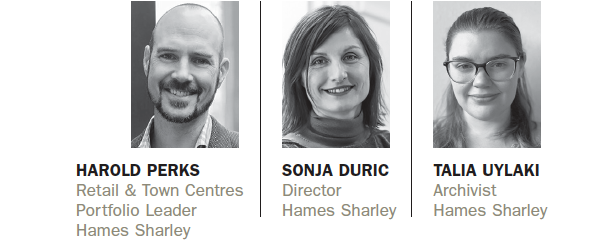
Accessibility is a common theme when talking about design. This article states unequivocally that designers have an obligation to raise awareness of accessible design. Diversity in our community is an increasingly relevant factor in design matters in our centres.
Our community in Australia is wonderfully diverse, and our built environment should reflect our diversity to be open to every person. People should feel included in a social space regardless of their personal and cultural identity and physical needs. As Shannon Battisson, National President of the Australian Institute of Architects declares: “Good architecture connects to country, climate and the people who inhabit both the spaces inside and surrounding our buildings, and – potentially the most important quality of all – good architecture leaves no one behind.” (1)
Looking back over the past decades reveals our shifting focus towards designing and building inclusive, accessible and diverse spaces. In the past ten years, we have witnessed a cultural move and social demand for safe and comfortable spaces that are open and accommodating to all users regardless of gender, age, physical ability, language, cultural mores, etc.
We have become more aware and accepting of the different needs of different people in our communities. This awareness and our attitudes responding to it shift and evolve through time and cultural contexts. What was once unsocial or ‘unseemly’ and preferable to ignore in the past, (for example, the needs of people with autism), is now recognised in design and architecture industries as an opportunity to positively benefit marginalised populations through design choices.
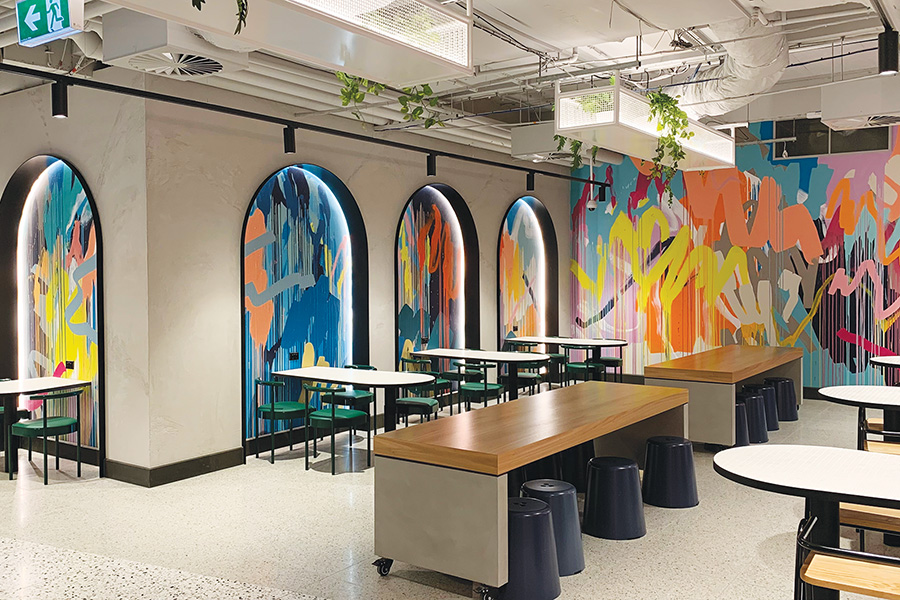
357 Collins St, Melbourne VIC
A major driving factor of accessible design has been embracing and complying with Australia’s Disability Discrimination Act 1992 to ensure that the built environment does not become an exclusion zone that prohibits certain people from accessing and using a space because their needs cannot be met. (2)
That feeling of exclusion could come from a lack of ramps and lifts to access buildings for wheelchair users or people with prams, a lack of family rooms in retail centres for parents with young children, a lack of faith rooms in buildings for people with religious commitments, or a lack of private rooms in workspaces for returning mothers who need to express and store milk. Therefore, if the problem is a lack of facilities and amenities that can positively benefit members of our community, then the solution is to provide. We must provide for people in marginalised populations and for those with physical differences. We must remember and recognise that all people, at any time, may find themselves temporarily or permanently relying on accessible design in our built environments.
Good design is good for people and profit
The more inclusive a space is, the more people are attracted to visit and stay in that space because they feel invited to be there. An increase in inclusive workspaces means more safe and accessible work environments for people overrepresented in unemployment statistics.
To accommodate employees with autism, the design team behind Hobsons Bay Civic Centre by Group GSA implemented multi-modal designs and different stimulation zones, allowing employees and other users to choose their level of comfort and type of environment to best suit their needs at any time.
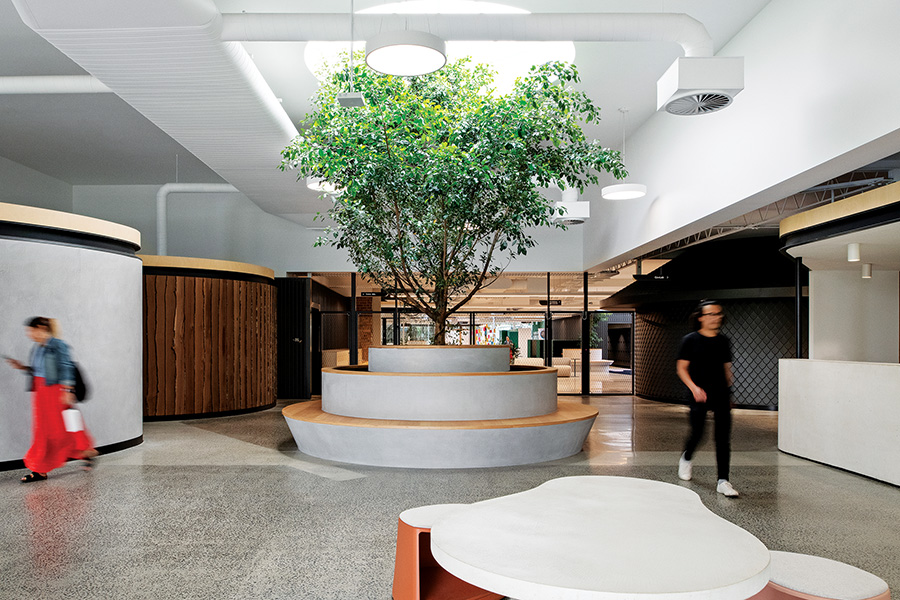
Hobsons Bay Civic Centre, VIC
In a retail context, the more customers and staff that find their needs and wellbeing considered in the shopping centre, mall or high street through accessible and convenient facilities and amenities, the more they will be encouraged to work, stay and, ultimately, spend their money.
This is particularly important as the retail sector is undergoing a change in how people interact with bricks-and-mortar stores and the move towards online shopping – especially considering the major shift in consumer behaviour due to COVID-19 lockdowns, restrictions and social distancing requirements.
To bring people back to shopping centres and other social and community environments, we need to make them want to come, but they won’t if they have difficulty accessing them or feel excluded from the space. This provides an opportunity for design firms to work with landowners and local councils to reinvigorate social and community environments by integrating accessible and inclusive design in existing and new buildings.
Architecture and design firms can be at the forefront of providing change for positive societal outcomes. Today, designers are consciously striving for equitable access and simple and intuitive use of space. These values align with the principles of universal design that aim to accommodate a user’s changing needs.
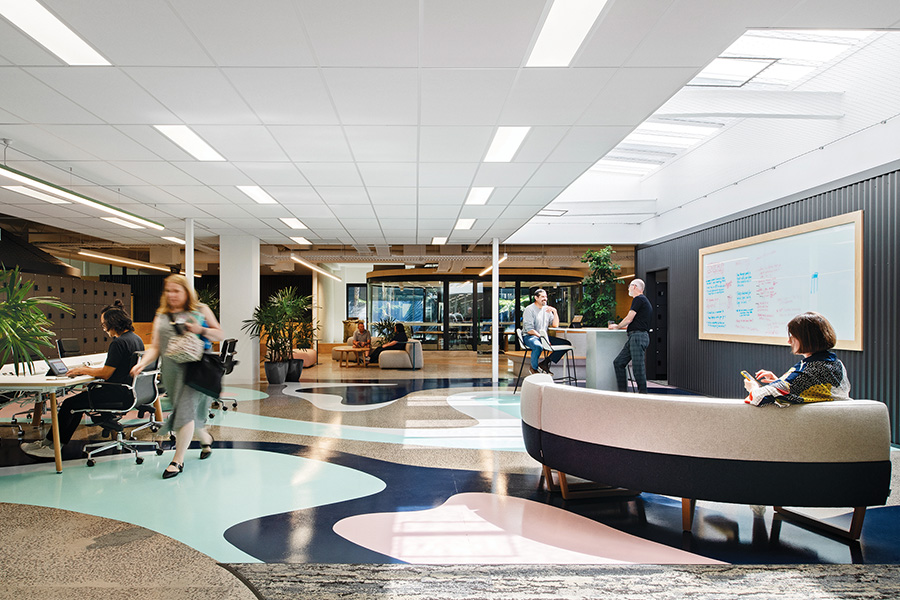
Hobsons Bay Civic Centre, VIC
“Change comes from within” may sound like a cheesy mantra, but ongoing cognitive bias is a challenge that designers must overcome. We may unconsciously create exclusion zones that don’t consider the needs of people simply because we don’t consider their needs in the first place. The best way to challenge our biases, inform our gaps in knowledge and change our preconceptions of people’s ability to use and occupy spaces, is to be able to reflect on and review our methods and processes, and to be able to engage in meaningful consultation with the communities we are designing for.
This must be an ongoing conversation throughout the design journey and beyond. Even though the design process is complete at Hobsons Bay Civic Centre, the designers (now members of Hames Sharley) are conducting feedback sessions with users to assess levels of comfort based on their sensory profiles to inform future improvements. Thereby demonstrating how we believe that ongoing research and consultation are essential to bridging the gaps in our knowledge to make the best design choices and to inform how we approach future projects.
Diversity matters
At Hames Sharley, we are committed to building diverse teams to the best of our ability so that all people have a voice and input towards a design project or aspect of studio culture, regardless of gender, age, culture, or health and parental status, etc. We encourage different portfolios to engage with each other so that a project can be considered from various viewpoints. For example, someone working within the health portfolio may have valuable insight on how to accommodate people with health needs in a residential or office project.
By being involved in designing disability housing for the ACT Government, our able-bodied staff are ‘walking in the shoes of someone else’ and realising the challenges that traditionally designed domestic homes may have for people living with a disability. They are gaining the ability to consider design beyond their own physical needs and will be able to use this valuable learning experience going forward in future projects.
- Broadway Sydney
- Marrickville Metro
The future is now
As we advance, successful accessible design from a studio viewpoint will mean acknowledging our lack of knowledge and confronting our biases, taking chances on creative and novel solutions to address problems, and breaking barriers.
Designers have an obligation to raise awareness for accessible design and to consider the impact of their design on the whole spectrum of our diverse community. This can be achieved through ongoing and evolving research, involving external stakeholders and expert consultants as well as clients throughout the design process, and qualifying design interventions and continually improving upon them. Our community is diverse, and we should strive to ensure that our built environment leaves no one in our community behind.
(1) Australian Institute of Architects 2022. “Shannon Battisson to Bring Focus on Accessibility and Sustainability as National President – Australian Institute of Architects.” architecture.com.au.
(2) In the 2021 Census, almost 1,500,000 people were identified as requiring assistance with core activities due to long-term health conditions, a disability or old age. Research by theworkingbrain.net and Hames Sharley has indicated that more than 20% of Australia’s population identifies as neurodiverse.


